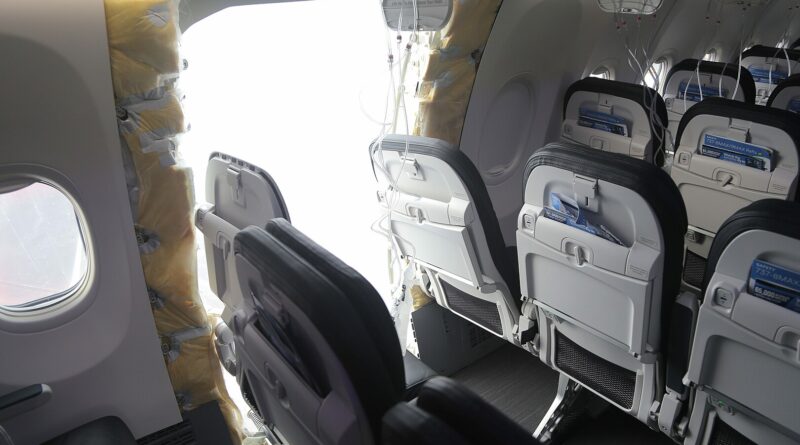Alaska 1282: A Wake-Up Call on the 737 MAX 9
On January 6, 2024, Alaska Airlines flight 1282, a Boeing 737 MAX 9, was en route from Portland (PDX) to Ontario, CA (ONT) when it experienced a cabin depressurization event involving a piece of the airplane falling off mid-flight. The pilots declared an emergency and diverted back to Portland, where they landed safely. Miraculously, no injuries were reported among the 153 passengers and crew on board.
The cause of the incident was linked to a faulty door plug on the aircraft’s left side. The door plugs are used to seal openings that might otherwise be used for an aft emergency exit in denser seating configurations, where an additional set of exits would be required. No US carriers currently operate the MAX 9 in a dense enough configuration to need that emergency exit, so these so-called “plugs” semi-permanently seal that opening, leaving open the possibility of reconfiguring the aircraft in the future (perhaps if sold to a low-cost carrier in another country).
Most cabin doors on modern commercial airliners are a “plug” or wedge shape – a convex shape with the interior side wider than the exterior side. This makes it impossible for the door to fit through the opening, distributes the stress of cabin pressurization more evenly, and makes the door impossible to open inflight. However, diagrams that have been released and findings from rival airlines suggest door plugs on the MAX 9 are not designed this way, but instead place the stress on a series of bolts. Preliminary reporting is suggesting perhaps failure of one or more bolts led to the AS1282 incident. This raises the question: are these “door plugs” actually “plugs” in the true sense of the word? Could Boeing potentially remedy this issue by implementing something more closely resembling a conventional plug-type exit door?
The incident also comes amid a series of inspections by multiple airlines that have found “loose bolts” on many 737 MAX 9s. According to the FAA, the issue affects about 300 aircraft worldwide, and requires a “detailed visual inspection” of the door plugs and bolts. The FAA also issued an airworthiness directive on January 8, 2024, mandating the inspections within 10 days.
After Alaska initially grounded their 737 MAX 9s, they promised to quickly return the planes to service after inspecting each one individually. However, the FAA quickly poured cold water on Alaska’s plans, grounding the MAX 9 nationwide. In fact, by the time the FAA issued their order, Alaska had already returned several MAX 9s to passenger service; those had to be subsequently pulled again. I have to wonder if this was purely a performative measure to placate the flying public. At this stage, did Alaska even know what they were looking for? Frankly, I’m still not sure they know what to look for, though issues with bolts may be a good start.
The AS1282 incident is another blow to Boeing, which has been struggling to restore confidence in its 737 MAX family after two fatal crashes in 2018 and 2019 that killed 346 people. The MAX was grounded for 20 months before being allowed to fly again in late 2020, after Boeing made several changes to the software and hardware of the aircraft.
Boeing employees are also calling out CEO Dave Calhoun amid the company’s recent HQ move from Chicago to DC. Many employees feel that HQ should be in Renton (or, at least, the greater Seattle area), where Boeing’s main factory is located, rather than across the country from the bread and butter of its core business. While there are many questions as to the difference in quality between Renton-produced and South Carolina-made Boeing aircraft, N704AL, the airframe involved in the AS1282 incident, was in fact produced in Renton, being delivered to Alaska just this past October.
Bottom line on the 737 MAX series: It’s going to be incredibly difficult for Boeing to regain public trust now. Previous issues with the MAX series, including the Lion Air incident, were attributed to the planes being flown in developing countries with more lax safety regulations and less-experienced pilots. Now this has happened on US soil, on a US carrier, that excuse no longer flies.

